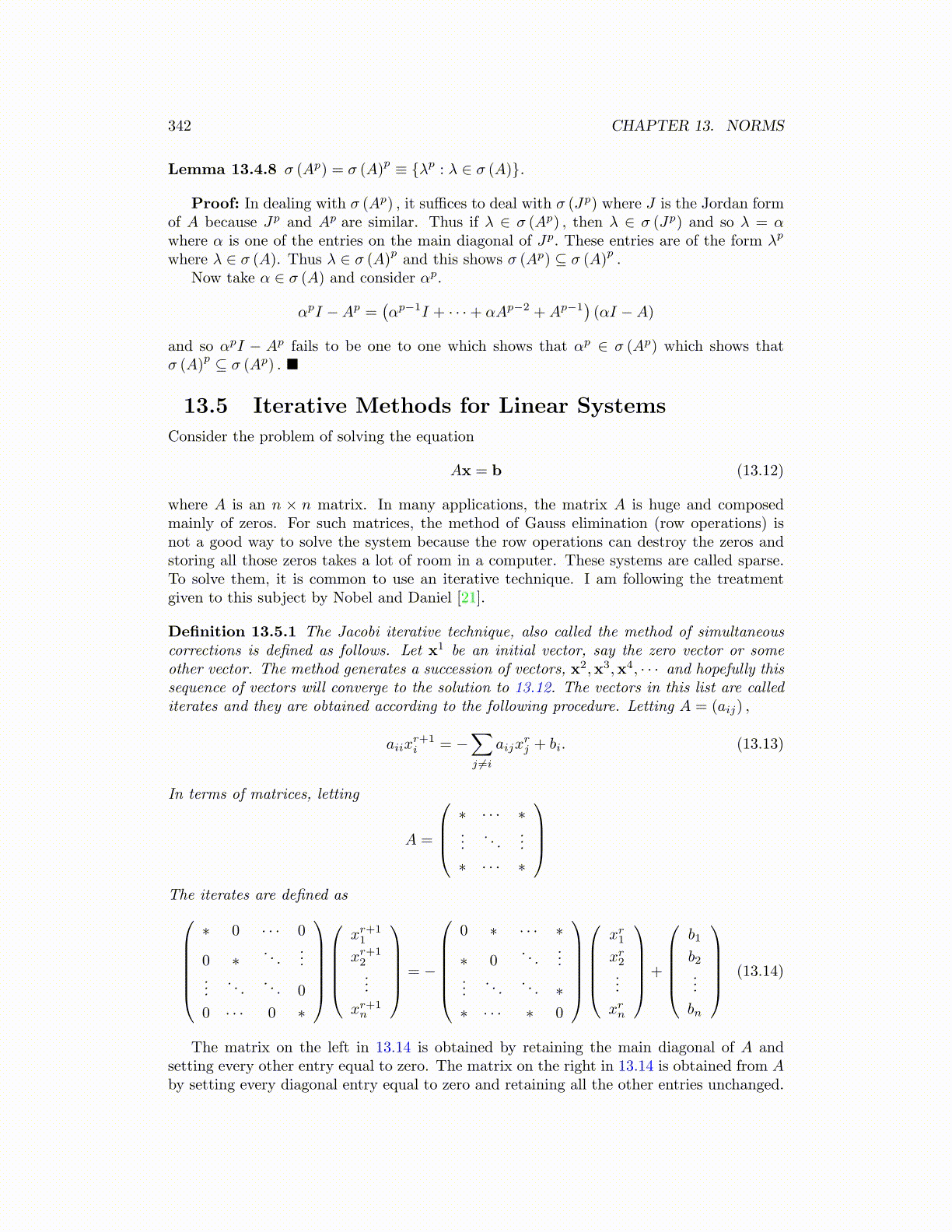
342 CHAPTER 13. NORMS
Lemma 13.4.8 σ (Ap) = σ (A)p ≡ {λp : λ ∈ σ (A)}.
Proof: In dealing with σ (Ap) , it suffices to deal with σ (Jp) where J is the Jordan formof A because Jp and Ap are similar. Thus if λ ∈ σ (Ap) , then λ ∈ σ (Jp) and so λ = αwhere α is one of the entries on the main diagonal of Jp. These entries are of the form λp
where λ ∈ σ (A). Thus λ ∈ σ (A)pand this shows σ (Ap) ⊆ σ (A)
p.
Now take α ∈ σ (A) and consider αp.
αpI −Ap =(αp−1I + · · ·+ αAp−2 +Ap−1
)(αI −A)
and so αpI − Ap fails to be one to one which shows that αp ∈ σ (Ap) which shows thatσ (A)
p ⊆ σ (Ap) . ■
13.5 Iterative Methods for Linear Systems
Consider the problem of solving the equation
Ax = b (13.12)
where A is an n × n matrix. In many applications, the matrix A is huge and composedmainly of zeros. For such matrices, the method of Gauss elimination (row operations) isnot a good way to solve the system because the row operations can destroy the zeros andstoring all those zeros takes a lot of room in a computer. These systems are called sparse.To solve them, it is common to use an iterative technique. I am following the treatmentgiven to this subject by Nobel and Daniel [21].
Definition 13.5.1 The Jacobi iterative technique, also called the method of simultaneouscorrections is defined as follows. Let x1 be an initial vector, say the zero vector or someother vector. The method generates a succession of vectors, x2,x3,x4, · · · and hopefully thissequence of vectors will converge to the solution to 13.12. The vectors in this list are callediterates and they are obtained according to the following procedure. Letting A = (aij) ,
aiixr+1i = −
∑j ̸=i
aijxrj + bi. (13.13)
In terms of matrices, letting
A =
∗ · · · ∗...
. . ....
∗ · · · ∗
The iterates are defined as
∗ 0 · · · 0
0 ∗. . .
......
. . .. . . 0
0 · · · 0 ∗
xr+11
xr+12...
xr+1n
= −
0 ∗ · · · ∗
∗ 0. . .
......
. . .. . . ∗
∗ · · · ∗ 0
xr1xr2...
xrn
+
b1
b2...
bn
(13.14)
The matrix on the left in 13.14 is obtained by retaining the main diagonal of A andsetting every other entry equal to zero. The matrix on the right in 13.14 is obtained from Aby setting every diagonal entry equal to zero and retaining all the other entries unchanged.